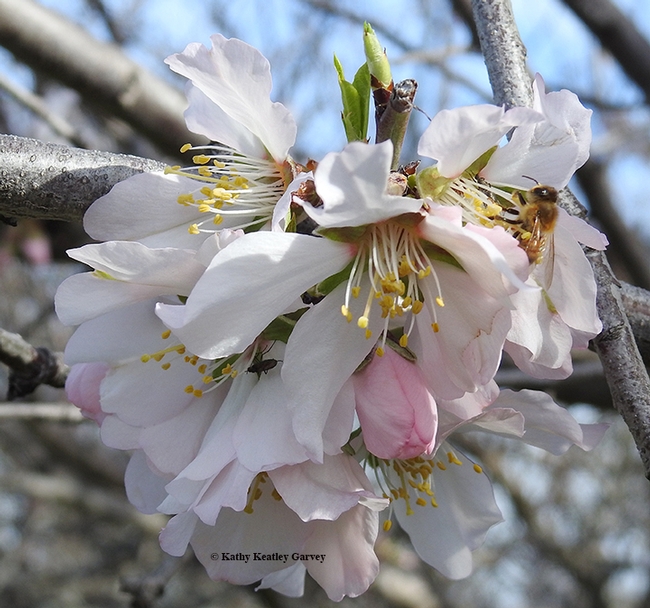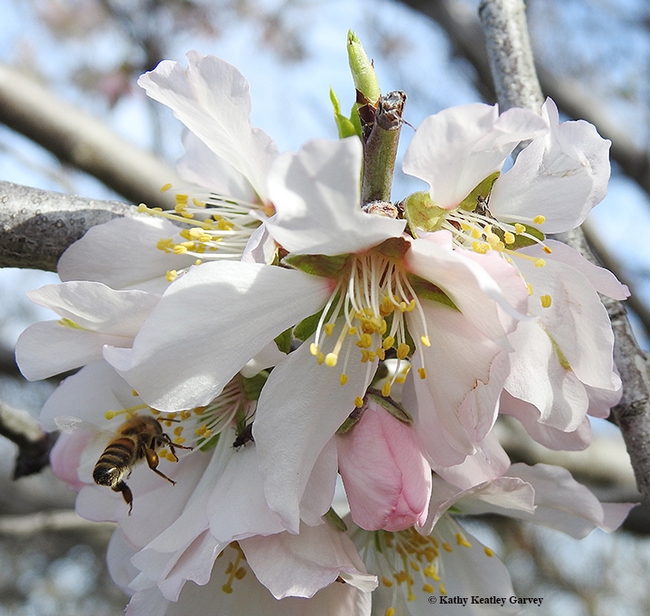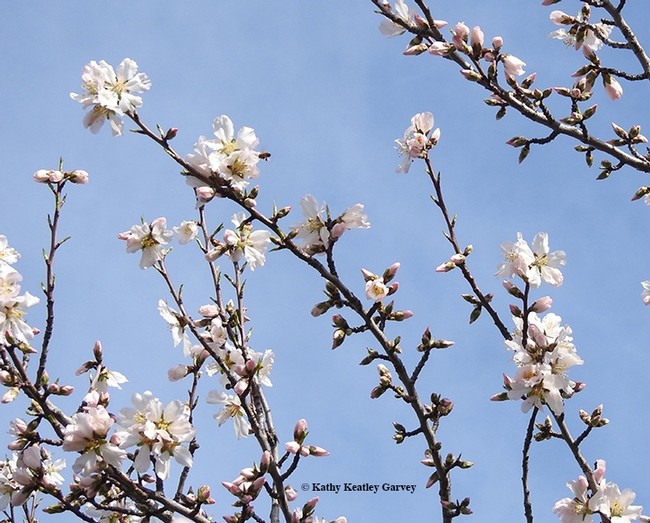It's almond pollination season in California but the weather refuses to cooperate.
Heavy rains, high winds, intense flooding. What are the bees to do?
They're holed up in their hives, waiting for the sun breaks. When the rain stops pelting their hives and the temperature climbs to 50 or 55 degrees, they poke their heads out. Let's go, girls!
Such was the scenario today when we went for a drive along Pleasants Valley Road in Vacaville, Solano County. Feral almond trees, storm-battered but stubbornly bracing for more, are blooming, and those bees--those glorious bees--are back.
The statistics are a bit overwhelming. California now has one million commercial acres of almonds. It takes two colonies per acre to pollinate them. Without bees, no almonds. With beekeepers reporting winter losses of 40 to 60 percent, what's the situation?
"What does that mean for the bee supply for almond pollination?" asks pollination guru Gordon Wardell in the current edition of Project Apis m (PAm). The organization's name comes from Apis mellifera, the scientific name for the European honey bee. "At present, while individual beekeepers' numbers appear to be down, there doesn't appear to be a shortage of colonies for almond pollination this year. While the supply might be tight, I don't foresee major shortages. Rental prices are up this year, averaging $170 to $185 per colony. This is $10 to $15 over rental prices last year. These prices are fair increases considering the amount of feeding needed to ready the colonies for February pollination and the increases in transportation costs."
Wardell, chair of PAm's board of directors and the 2016 recipient of the California State Beekeepers' Association's Distinguished Service Award, knows bees, knows almonds, and knows pollination. A professional apiculturist for more than three decades and now director of pollination operations for Wonderful Orchards, he's a former Extension apiculturist for the state of Maryland. His research includes developing Mega-Bee, the honey bee nutritional supplement. He's authored numerous publications on honey bees. His expertise covers Varroa mite control, honey bee nutrition, fire ant monitoring, small hive beetle, Africanized honey bees, and many other topics.
Wardell describes what's happening in California now as "the greatest commercial pollination event in the world."
Because it is. Billions of bees pollinating a million acres of almonds.
On a minuscule scale, it's still marvelous to see a dozen bees foraging on a single feral almond tree...doing what bees do.
Attached Images:

A honey bee foraging on a feral almond tree today (Feb. 10) in Pleasants Valley, Vacaville.(Photo by Kathy Keatley Garvey)

A pollen-packing honey bee heads for another almond blossom. (Photo by Kathy Keatley Garvey)

Blue skies, almonds blooming, bees buzzing--and all's right with the world. (Photo by Kathy Keatley Garvey)